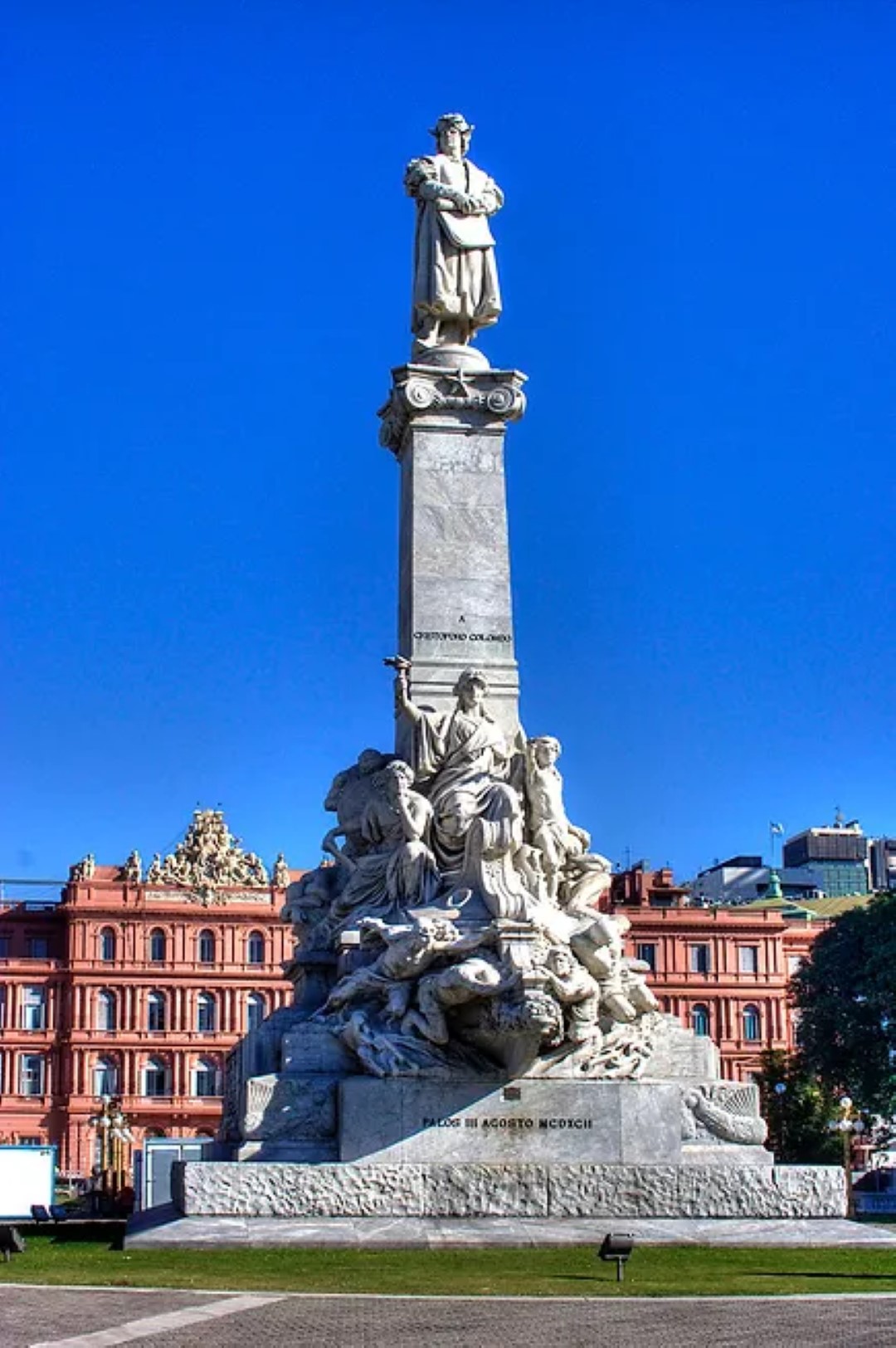Donated to the Argentine Republic by the Italian community, the Monument to Columbus was sculpted by Arnoldo Zocchi and inaugurated in 1910 during the Centennial celebrations. It aimed to represent what Italians viewed as their gift to Argentina: Columbus’s discovery of America, reframing the figure of Columbus as one claimed by the Italian Argentine community.
Erected behind the presidential palace (la Casa Rosada), the monument was taken down in 2013. It was replaced with one representing the independence-era revolutionary, the mestiza Juana Azurduy de Padilla. The Columbus monument was then re-erected at the Paseo de la Costanera in 2017, overlooking the river and in front of the Jorge Newberry airport.

The Italian contribution to the 1910 centennial built off a longstanding trope of discovery in the Americas. At the bottom it states “Palos III Agosto MCDXCII”, the town and date from which Columbus departed Spain in 1492. Like all references to Columbus in places far from where he made landfall, the statue ties Argentina to the very beginning of Spanish colonization in the Americas (and under Italian leadership).
On one side of the monument, there is a fresco depicting Columbus’s meeting with the Catholic Monarchs, Isabella and Ferdinand before departure (figure 1). The other side depicts six Indigenous people kneeling in front of a now standing Isabella and worshiping or showing reverence (figure 2).
A striking feature of the two frescos is in comparison to other monuments is that whereas the French monument juxtaposes four moments close in time and related to the founding of the Argentine Republic, this one shows the moment before and after Columbus’s first voyage to the Americas four centuries before.

Source: Photograph by Ángela Fantino

Source: Photograph by Ángela Fantino
Whereas the connection to France or Spain might have needed to be made more metaphorically, the case for Columbus was seen as more obvious to the average 1910 spectator (even if his voyages to the Caribbean were far from Argentina). The inclusion of the Catholic monarchs, clerical and noble figures, and vague and generalized images of Indigenous people in a 1492 moment also speaks to a broader trend in Spanish America in the first century after independence. The incorporation of Indigenous iconography into official visions of the nation during the first century of independence across Hispanic America typically showed them as representatives of ancient cultures rather than members of contemporary societies.
The choice of Columbus for the 1910 celebration came after affluent Italian immigrants to the city had already made a monument to Giuseppe Garibaldi.
The Italian explorer Christopher Columbus before and since the 1910 centennial has occupied an important place in Argentine consciousness, not necessarily tied to Italian immigrants. Columbus Day (called el Día de la Raza and marking Columbus’s landfall on October 12, 1492) became a national holiday in Argentina in 1917, and held national significance, as it marked the entrance of new presidents into office, starting in 1862. The Día de la Raza was associated with Hispanic nationalism and Spanish colonization of the Americas.

